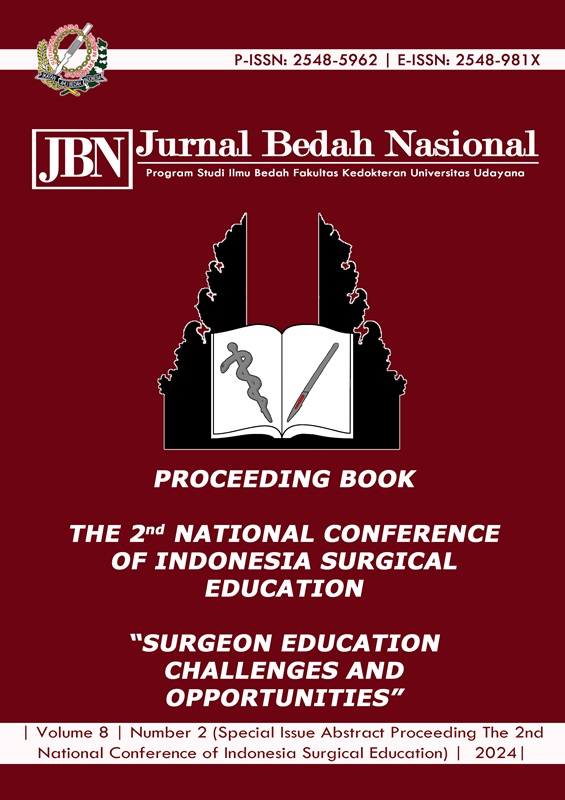003. Diagnosis And Management Flow of Patients with Spontaneous Intestinal Perforation: A Case Report
Abstract
Background: Spontaneous intestinal perforation is the second most common cause of neonatal bowel perforation. The major dilemma for neonatologists and pediatric surgeons may be caused by NEC and severe SIP may have comparable physical examination findings, as well as radiological examinations showing pneumoperitoneum. Case: This case report describes a five-day-old boy brought by his parents to the ED because of abdominal distension that had occurred for the past two days. Physical examination showed a moderate general condition, CRT <2 seconds, pulse rate 128 beats per minute, respiratory rate 32 breaths per minute, body temperature 38 ?C, SpO2 99% room air, body length 40 cm and body weight 2,800 grams. The patient's abdomen was distended. The patient underwent laparotomy and was diagnosed with post laparotomy exploration + ileum resection + ileoustomy + adhesiolysis in patients Peritonitis dt spontaneous ileum perforation. Differentiation between SIP and NEC is usually based on clinical manifestations and abdominal radiographic findings, although there are many similarities between the two conditions. Conclusion: Primary peritoneal drainage can serve as the primary treatment for critically ill neonates requiring stabilization. Laparotomy allows for assessment of the severity of the disease, removal of necrotic bowel, and hastening recovery and discharge.
Downloads

This work is licensed under a Creative Commons Attribution 4.0 International License.
Program Studi Ilmu Bedah Fakultas Kedokteran Universitas Udayana. 
This work is licensed under a Creative Commons Attribution 4.0 International License.






